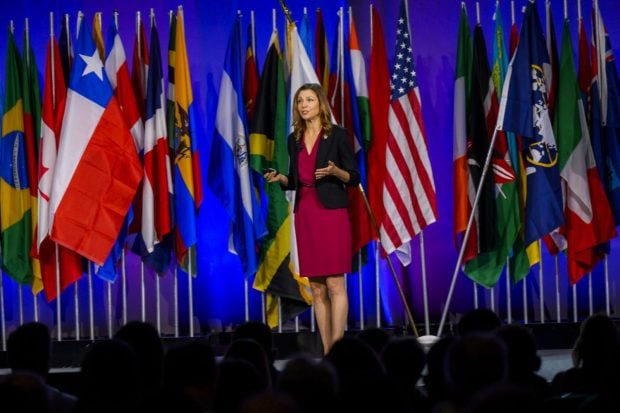 Credit/Adobe Stock
Credit/Adobe Stock
A NAFCU economist said the Fed will have a shorter runway to make a soft landing with its monetary policy as inflation that has been slowly falling might be threatened by rising energy prices as a side effect of wars in Ukraine and Israel.
The U.S. Bureau of Labor Statistics (BLS) reported Thursday that inflation rose 3.7% over the 12 months ending in September, the same rate as through August. They rose 0.4% from August to September after seasonal adjustments after rising 0.6% in August and 0.2% in July.
Recommended For You
Removing food and energy, inflation rose 4.1% over the 12 months ending in September. Core inflation rose 0.3% from August to September after seasonal adjustments after rising 0.3% in August and 0.2% in July.
On Oct. 6, BLS reported average hourly earnings rose 0.21% from $33.73 in July to $33.81 in August after seasonal adjustments. It followed a 0.24% pay increase in August.
NAFCU Economist Noah Yosif said the drop in core inflation suggests the Fed's monetary policy has been "effective in decelerating labor costs, restraining labor demand and fostering the cooldown in prices the Federal Reserve has sought to realize, especially within core services."
 Noah Yosif
Noah Yosif However, Yosif said energy prices, which already had been rising over the summer, now pose "an increasingly potent risk driven by geopolitical challenges in both Europe and the Middle East."
Economists Yosif at NAFCU and Dawit Kebede at CUNA both said Thursday's inflation report would support a Fed decision to maintain rates at their currently high levels. The Federal Open Market Committee's next two-day meetings end Nov. 1 and Dec. 13.
"Keeping rates higher for longer invariably diminishes the window of opportunity for a soft-landing," Yosif said.
Yosif said NAFCU expects the cooldown in the labor market and consumption will continue gradually, providing the Fed "adequate time to assess the trajectory of inflation and tailor monetary policy accordingly."
Kebede said the annualized core inflation rate for the last three months is now less than 3%.
 Dawit Kebede
Dawit Kebede "The declining core inflation indicates that prices are moving towards the Federal Reserve's target," Kebede said. "This coupled with declining wage growth and recent increases in bond yields, suggest that the Federal Reserve may not need more rate hikes to control prices."
Kebede said September's inflation was boosted by higher costs for shelter. Housing inflation rose 0.3% from July to August, and 0.6% in September.
"This is unexpected, as the impact of shelter on the overall inflation was anticipated to be muted at this time after showing declining trends in the past few months," Kebede said. "Shelter is a lagged indicator in the inflation report, and some of the declines in housing prices observed early in the year are not yet reflected."
© 2025 ALM Global, LLC, All Rights Reserved. Request academic re-use from www.copyright.com. All other uses, submit a request to [email protected]. For more information visit Asset & Logo Licensing.








